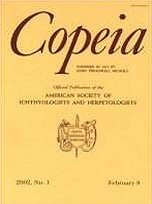Diet and prey size relationships of Flathead Snakes (Tantilla gracilis) in the pine- hardwood forests of east Texas were determined on 68 individuals. Ninety-five percent of the snakes contained prey of which a large proportion was identifiable. Approximately 80% of the diet (by frequency) of T. gracilis consisted of coleopteran (beetle) larvae of the families Alleculidae, Elateridae, and Tenebrionidae. Other prey were centipedes and terrestrial snails. Correlation of prey size with snake size revealed a positive relationship, but accounts for little of the variation. Adults and juveniles ingested the same relative prey sizes with juvenile snakes predominately feeding on alleculid larvae and adults feeding on tenebrionid larvae. Larger snakes had a greater prey mass in their alimentary tracts; however, they did not consume significantly greater numbers of prey items. Direction of prey ingestion was primarily posterior first (72%). Because most of their prey have elongated bodies, it appears that T. gracilis responds to growth changes in body size by switching to different prey types. Choosing prey by size may be less important than prey shape for T. gracilis because of the morphological adaptations associated with a fossorial existence.
How to translate text using browser tools
1 May 2004
Diet and Prey Size of the Flathead Snake, Tantilla gracilis
Vincent A. Cobb
ACCESS THE FULL ARTICLE





